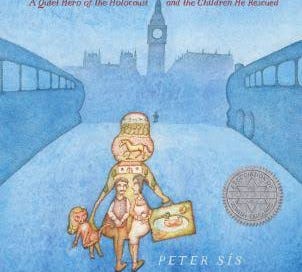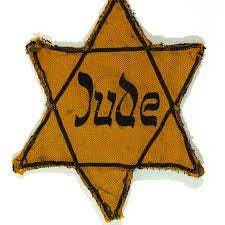Teaching the Holocaust at Key Stage 2?
27th January marks Holocaust Memorial Day. Here are my suggestions on how to approach teaching this subject at Key Stage 2 along with useful some resources.
When discussing planning our World War 2 topic for our Year 5 and 6 pupils, I asked one colleague whether they thought we should include any lessons on the Holocaust. Their answer: “That’s Key Stage 3” and “absolutely not”. Another colleague said yes that we should and talked about Anne Frank and how her experience was an important for young people to know about. Earlier this year, when I ran a twitter poll on this same subject, opinions were roughly divided 50/50 with some teachers strongly in favour and others fervently against teaching at this level.
The Holocaust is a compulsory topic for KS3 history (the only compulsory content stipulated in fact) and some may prefer to leave it to secondary teachers to address it. Given such sensitive subject matter, it is also understandable why teachers may not want to touch on the subject of genocide; the extermination of millions of Jews (as well as other groups) is an extremely upsetting topic for adults let alone children. Should any aspect of the Holocaust be included in a primary setting? If so, how should this be approached? In this post, I will discuss how I have taught this event with Upper Key Stage 2 pupils as well as offering some useful resources.
I personally feel that this such an important event from recent history that pupils should have an awareness of it before high school. Teaching the Holocaust at primary level is certainly not going to be the same as in KS3. It does not mean going into graphic detail about what happened at the death camps or showing images that would upset or scare pupils (and a sensitive approach should equally be used at secondary level or in any teaching of the Holocaust). It is also definitely an event from 20th century history that should be reserved for only the oldest pupils in UKS2, who have the maturity to discuss it in an age relevant way. It needs to be handled very sensitively but it can also be an extremely valuable event to teach. The Historical Association (Primary History 77) have some useful guidance about teaching the Holocaust to primary aged pupils which I would certainly recommend if you are covering the Holocaust.
Within my own class, I introduced this very sensitive issue by showing pupils an image of the yellow star Jews were forced to wear in public by Hitler and the Nazi party. Without revealing anything about the object, I asked them to discuss in pairs what they thought it was, who might have used it and why it might have been made. I asked them what they wondered about it and got some really interesting answers. Here are some of the children’s responses:
“It’s a badge.” “It looks like a sheriff’s badge because it’s a star.”
“It’s made of fabric.” “I think you sew it on like a swimming badge.”
“I’ve seen the star symbol in RE.” “It’s a Jewish star.”
“There’s a word on it.” “It says Jude'.” “Maybe it’s a name.”
“The word Jude sounds like Jew or Judaism.” “I think it’s in another language.”
“I think Jude means Jew in German.”
Pupils’ answers were thoughtful and they reasoned about the artefact shown by using clues from RE lessons. I then went on to explain that Hitler made a law that Jews had to wear this badge on their clothes in public and I introduced the vocabulary Holocaust and anti-Semitism and what these terms meant.
I went on to read the picture book Nicky and Vera by Peter Sis. This is the true story of Sir Nicholas Winton, a banker who organised transport for 669 children to leave Nazi-occupied Czechoslovakia, and Vera, one of the children who he rescued.
The book explains - in a child-friendly way - the situation in Europe at the start of the war and why people had to leave their homes. It focuses on the quiet heroism of Sir Nicholas (Nicky) and allows pupils to empathise with the little girl (Vera) who had to flee her home in Czechoslovakia. Pupils in my class listened to the story attentively and respectfully. It provoked a good discussion not only of the kindertransport but of refugees in general. Children talked about refugees in general (which we had been learning about in PSHE) and make the connection between events of WW2 and present day Ukraine. We focused on the heroism of Nicky and why he was an important figure during WW2 by using a short biography about him to explain his achievements and impact and also what it would have been like for Vera to come to the UK based on sources we have about her childhood.
The following resource from the Holocaust Educational Trust provides information and sources on Vera’s early life which pupils could analyse in lessons.
https://www.het.org.uk/primary/veras-journey
I also linked the stories of local heroes like Philip Boyle and David Makofski (both dubbed ‘the Yorkshire Schindler’) from Leeds and to explain that during WW2 Jewish refugees travelled to our region. This provided the chance to make local links and to show how Jewish people have migrated to the towns and cities around us because to this event (this was done as a very small part of a local history topic on WW2 in our region).
One resource that might help when finding local links to your own area is this interactive map charting links to the Holocaust in the UK.
https://www.ukholocaustmap.org.uk/map
During our WW2 topic, we also looked at the life of Anne Frank. I used Josephine Poole’s picture book about Anne Frank, which features stunning illustrations by Angela Barrett, as I felt this was more appropriate and accessible for my Year 5s than using her diary (which our Year 6 pupils looked at in more detail) although we did study one or two short, adapted extracts.
Although I used this text primarily for our English lessons in which children were writing their own biographies of Anne Frank, it gave them an awareness of the issues of the time; it gives an insight into how and why anti-Semitism grew in Germany after World War I, how Hitler grew in popularity and the ramifications for Jews in Europe during this period. At its heart, it is a very human story of a young girl and her family. Pupils were able to talk about Anne Frank and had an understanding of some of the causes and consequences of Hitler’s rise to power. The illustrations in this book provoked a lot of discussion about the feelings of Anne and her family and were really valuable for my teaching.
There is also an Anne Frank book in the Little People, Big Dreams series of books that explains her life well and would be appropriate for use with KS2 children. The following Newsround special also covers Anne’s life very thoroughly in a way that would is appropriate for Upper KS2 pupils.
https://www.bbc.co.uk/newsround/46987263
By focusing on the stories of young people and the kindertransport, pupils were able to understand the issues that affected their own age group in this time. Teaching the Holocaust also enabled my pupils to better understand issues happening in the world around them and show empathy towards refugees from other countries and express their own opinions about this issue. What if they had to leave their homes and travel to another country? It also addressed questions about prejudice and racism also covered as part of our PSHE curriculum. I was extremely impressed by the answers of my pupils in class and some of them even commented that this was similar to racist and homophobic laws in other countries around the world (pupils mentioned the war in Ukraine and laws in Qatar where the World Cup was being held).
To sum up, if you decide to teach the Holocaust at KS2 it is hugely important to get it right. You may decide to leave it for secondary level and that too is absolutely fine. If you do proceed, make sure that you have the agreement of your SLT beforehand, that coverage is appropriate and teachers know exactly what they should be teaching. As history co-ordinator, I have outlined exact curriculum content to be covered on our medium term plans so teachers are clear what they should teach in any history unit. The Holocaust should not be a huge part of a topic and needs to be relevant to what the pupils are learning (we covered it as part of a WW2 topic so it seemed important to include it but this probably wouldn’t work if you don’t touch the war as part of your curriculum or if you were covering WW2 in a younger age group). It should be treated seriously and sensitively without it being just tokenism. Primary pupils are more than capable of discussing difficult, contentious matters in a considered and sensitive way: the discussions my own class had as part of our lessons on the lives of Nicholas Winton and Anne Frank showed just how mature they were.








